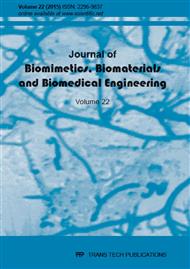p.3
p.13
p.21
p.29
p.37
p.51
p.63
p.77
p.89
Effect on the Reconstruction of Blood Vessel Geometry to the Thresholds Image Intensity Level for Patient Aneurysm
Abstract:
Thresholding is the greenest and most generally used techniques in image segmentation. This threshold determination can be used to extract various features of the vascular geometry that is used for understanding and analyzing of the image. Our objective is to investigate the influence of the modernization of blood vessel geometry to the threshold image intensity level difference in vessel segmentation. This study included a patient with cerebral aneurysms. We employed three different threshold levels from 200, 400 and 600 in order to determine the influence of the threshold objectively. The flow solution variation on exemplified by wall shear stress (WSS) presents similarity due to the location and magnitude of geometry variation resulting from the different threshold image intensity level and relatively small changes can lead to important dissimilarity in geometry of vessel and flow feature, predominantly in location with an enormous variety of cross sectional area. This is the significance of the understanding of modeling computational simulations of blood flow and can be expressively effected by alterations in geometry different.
Info:
Periodical:
Pages:
89-95
Citation:
Online since:
March 2015
Price:
Сopyright:
© 2015 Trans Tech Publications Ltd. All Rights Reserved
Share:
Citation:


